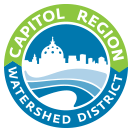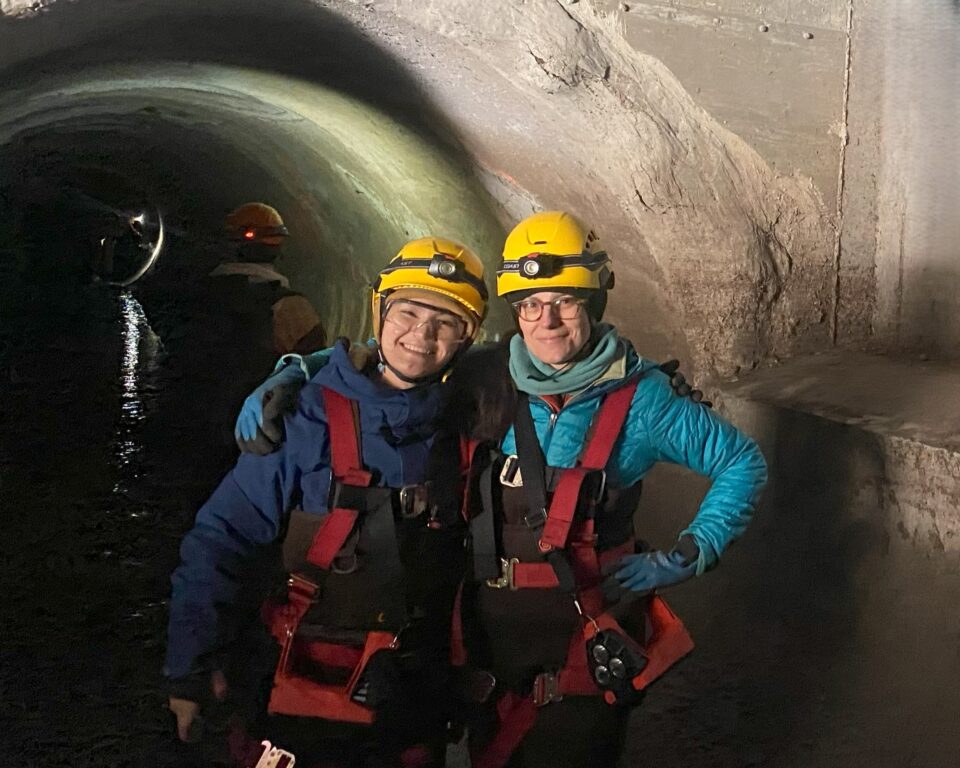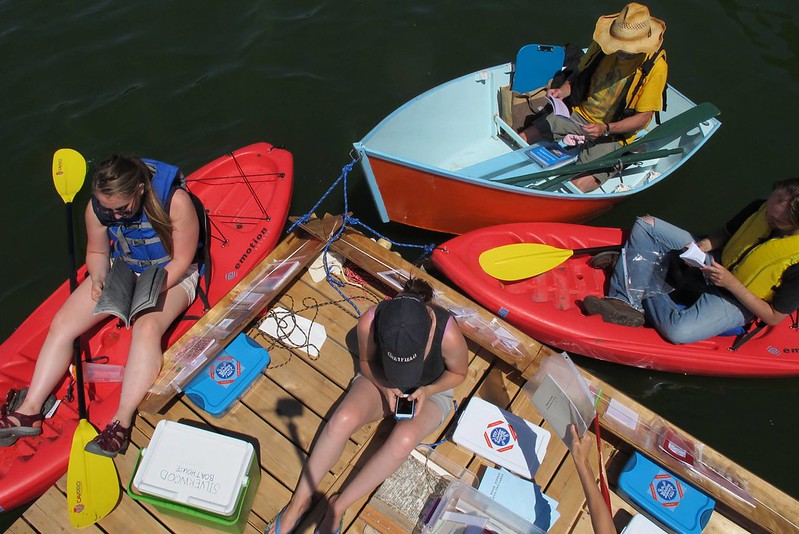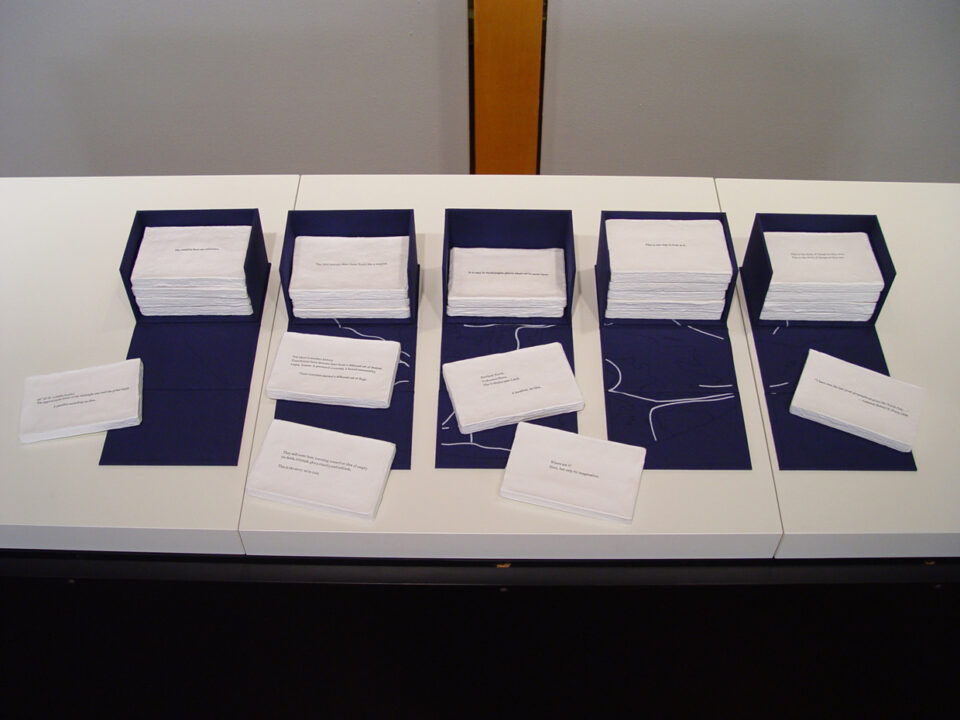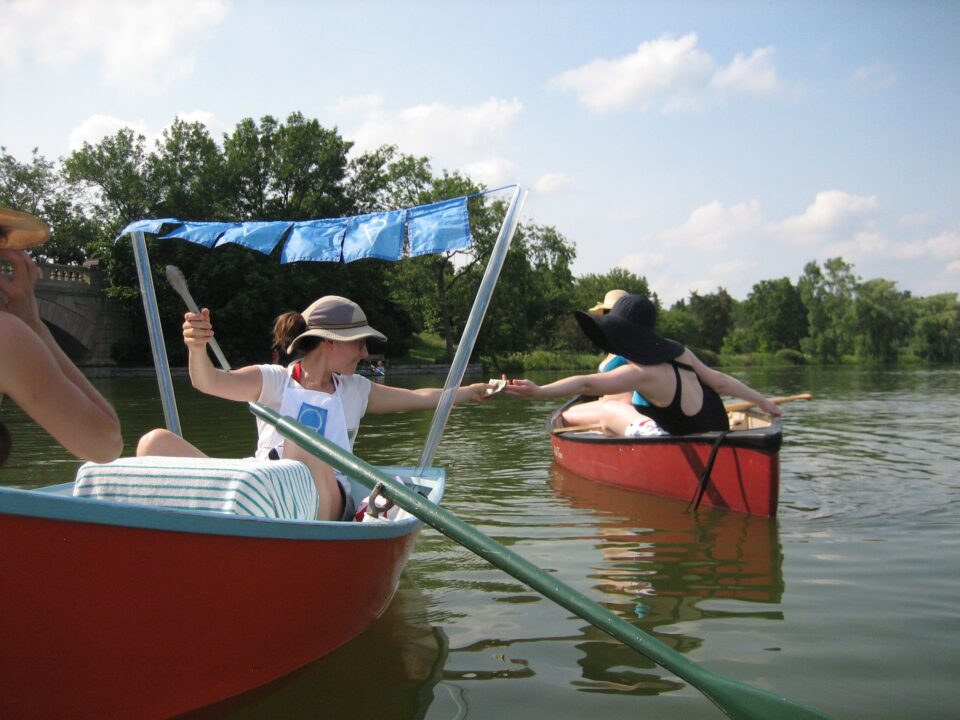Introducing our Watershed Artist in Residence, Sarah Peters
The mission of Capitol Region Watershed District (CRWD) is to protect, manage and improve the water resources of the District. Through the Watershed Artist in Residence Program, CRWD integrates art and artists into our projects and programs to help us achieve our mission by creating connections between water resource managers, engineers, community partners and residents, resulting in more clean water projects and actions. This interdisciplinary and socially engaged art approach impacts how we think about problems and create solutions.
The Watershed Artist in Residence (AiR) helps shape CRWD’s projects and programs by providing artistic and creative perspectives as part of an interdisciplinary team, facilitating Art + Water community workshops at CRWD’s Watershed Learning Center in collaboration with other local artists and mentoring an Early Career Artist.
Sarah Peters, CRWD’s Watershed Artist in Residence
Sarah Peters is CRWD’s Watershed Artist in Residence (AiR). In September 2024, we shared a request for qualifications for a new Watershed AiR. We received many statements of qualification from incredible artists throughout the Twin Cities. A panel of staff members and Board managers selected Sarah as our next AiR.
The Mississippi River is Everywhere
By Sarah Peters
I first learned about watersheds a little over a decade ago. I was working on an interactive, theater-based game about water quality with my former arts organization, Northern Lights.mn. The educators at Minnehaha Creek Watershed District patiently drew up analogies about bathtubs and drains to describe how a watershed’s borders are defined by the place to which all the water in a geographic area drains. In our case, here in central Minnesota, that’s the Mississippi River. Suddenly, I understood that all land has a relationship with water, even in the most concrete-covered places. No matter where we are, the sidewalks and streets we traverse lead to the river in terms of runoff. Poetically speaking, the Mississippi River is everywhere. This perspective of interconnection motivates me to think differently about belonging to a place. For instance, I am a resident of the city of Saint Paul, in the state of Minnesota, but I am also a guest on Dakota homelands and waters, a renter within the Eastern Broadleaf Forest, and I was born and raised in the ecoregion of Tallgrass Prairie. How would our communities, our senses of place, be different if we identified primarily as residents of an ecosystem?
Art as Public Participation and Processes of Collaboration
I am also a visual artist, bookmaker, writer, event organizer, curator, former non-profit executive director, and novice kayaker. These identities and activities converge around an interest in public participation and processes of collaboration. The most fulfilling projects I’ve been part of, even as a founder and leader, have only come into being through the participation of others. And incidentally (or not?), many of these relate to water.
From 2013-2017, I steered a public art project called The Floating Library (FL). Born from my love of artist books and paddling city lakes, the FL was a collection of artist books displayed on a custom-built raft with bookshelves. Patrons reached the Library via canoe or kayak and were encouraged by the volunteer Floating Librarians to check out materials for reading while on the water. The lending and reference collections were juried from an open call, and when I had enough funding, I commissioned projects specifically for the library by artists whose work I admired. At its height, the collection included works by hundreds of artists from multiple nations.
Back on land, I have also created three editioned artists’ books of my own, one as a recipient of the Jerome Book Arts Award through the Minnesota Center for Book Arts and two as a resident at the Women’s Studio Workshop in upstate New York. In contrast to my public projects, making books feels much more internal and private. Time slows down at the studio table surrounded by paper, thread, words, and paste. Even so, the process of editioning a book, print, or multiples of anything often involves many helping hands to get to the finish line.
For many years, I helped build and sustain an arts non-profit that supported artists in creating and presenting work in the public sphere towards an expanded definition of civic engagement. Northern Lights.mn attracted fantastic people, and together we produced the beloved, all-night, multidisciplinary arts festival Northern Spark. I met many artists working with environmental justice issues in those years, as we intentionally themed the festival around climate change and then kept going with projects like the watershed game mentioned previously. While we recently closed the organization, the mission of connecting people to each other, to art, to artists, and to place remains close to my heart and guides much of what I hope to do at CRWD.
Artist in Residence
During my time as AiR at CRWD, my responsibilities fall into a few different categories.
Most concretely, I will ideate and organize a series of Art + Water Workshops to illuminate the world of stormwater management through artistic activities. These events will draw upon the abundant creativity of our cities to invite artists in many disciplines to collaborate on interactive experiences and hands-on making in CRWD’s building and gardens, known as the Watershed Learning Center.
The first of the Art + Water Workshops is the Seed Paper Party on Saturday, May 10! Please join us for this free day of fun and learning for all ages about the relationship between native plants and clean water, just in time for the spring garden season.
More abstractly, I am embedded into the many areas of CRWD’s work to learn the ins and outs of stormwater management, from monitoring pollutants, to erosion and sediment control permits, to planning for large water systems construction projects. I aim to find ways to integrate the arts into these efforts so that they might become more visible to all of us. Much of CRWD’s work happens underground in miles and miles of storm tunnels like the ones I visited during my first week or other water flow systems. How can art help to bring these systems to the surface? Could we create a street mural the length of the Trout Brook Interceptor? Water poems by Saint Paul authors installed at McMurray Field? An illustrated zine guide to being a resident in a Renter’s Watershed? These are just some early brainstorms but many things are possible!
The third part of my responsibilities as AiR involves mentoring an early career artist interested in community-engaged work around water. I am humbled to play this part and wholly delighted to be co-learning with Early Career Artist Maricella Xiong, CRWD’s Community Engagement Coordinator and a paper maker, poet, circle keeper, and mediation practitioner. I think of mentorship as circular, like an interwoven skill share informed by generational or experiential differences. I have already learned so much from Maricella in a few short weeks of collaboration; I look forward to more in the months to come.
Embedding the arts in the work of watershed management is a forward-thinking strategy of which I am honored and inspired to be part. Thank you to CRWD’s staff and Board, who have made space for artists within the work of the District!
